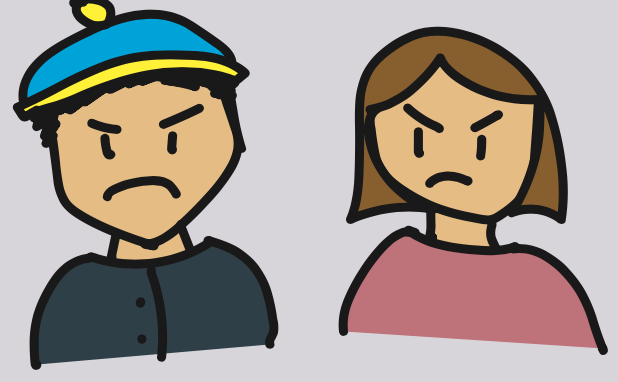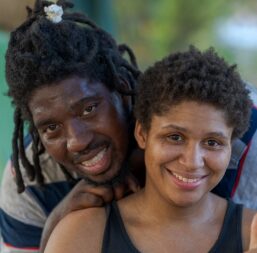
writing: Luna Perez
design: Nathan Chow
Allie is the middle child, and after her crazy night of sneaking out, it’s Noah, the oldest sibling, who must be responsible for making sure she gets home safe without their parents finding out. Meanwhile, Maddie, the youngest sibling, can go out as late as she wants to wherever she wants with no consequences from their parents.
Does any of this scenario sound somewhat familiar? A responsible older sibling, rebellious middle child, a younger sibling who gets away with everything?
This scenario considers different birth order theories: the idea that the order in which siblings are born affects their personalities in certain ways. Each sibling has their own characteristics and ways in which they’re treated.
AP Psychology teacher Jamie Paoloni explains the idea of birth order and each child’s characteristics. She starts with the oldest siblings and their common personality traits.
“Oldest children tend to be a little bossy. They tend to be, in many instances, more responsible, and they tend to take charge of their younger siblings and therefore get that definition of being more responsible and bossier,” Paoloni said.
According to one of the leading psychiatrists in charge of birth order Alfred Adler, the oldest sibling can feel dethroned when the second child arrives. Since the oldest sibling used to be the only baby, they had their parents’ full attention. But with a new baby, that attention is now split.
“No matter what the lineup is, the oldest sibling may have some feelings of dethronement by the second to oldest sibling as they now have to share their parents’ attention, all of which can shape birth order,” Paoloni said.
According to Healthline, middle children have trouble fitting in between the youngest and oldest siblings. However, their characteristics are a bit different depending on the number of middle siblings.
“If it’s three siblings, middle siblings are often described as being a little bit more rebellious in comparison. They might feel a bit lost in between the older sibling who came first and the younger sibling who’s the baby,” Paoloni said.
If there are more than three siblings, the older middle child tends to resemble the oldest sibling and the younger middle child tends to have the same traits as the youngest sibling. According to Healthline the youngest child is usually spoiled and treated like a baby.
“You may hear older siblings describe the baby sibling as being a little bit lazy, as perhaps getting away with things that their older siblings didn’t get to do, maybe being a little more laid back in comparison to their older siblings,” Paoloni said.
Though many of these characteristics and personality traits are commonly found within siblings, one must keep in mind that birth order is only a psychological theory, not a rule. Not all siblings will have the stereotypical traits that belong to their birth order.
“One of the things we always preface when we’re talking about psychological research is that you’re never going to find that a theory in psychology fits 100 percent of the population. That will never be true,” Paoloni said.
One example of this is the family dynamics of sophomore Annie Bookhimer who is the youngest of five children. Her family dynamics, specifically when it comes to older siblings, are very different from the typical birth order characteristics.
“We all kind of act the same despite who’s the oldest and who’s the youngest but my oldest brother makes really dumb choices,” Bookhimer said.
Bookhimer’s brother breaks the typical bossy and responsible oldest sibling stereotype. However, one way Bookhimer’s family falls into birth order theories is when it comes to how parents treat their children based on birth order and common traits of youngest siblings.
“My mom was a lot stricter about my older siblings’ grades and stuff like that but I can do whatever and they don’t care,” Bookhimer said.
Bookhimer said she is a prime example of the carefree youngest sibling who gets away with anything. She also mentions another common birth order occurrence on how parents are more careful or strict with their first few children compared to their youngest children.
“Whether parents mean to or not they’re a little bit more cautious with the oldest child just because you have really no idea what you’re doing,” Paoloni said. “But by the time your second and third kid come along, you have a little more experience and you’re not as worried.”
Overall, it’s clear that birth order theories are extremely prevalent in many families and affect parents’ relationships with their children as well as relationships between siblings. But it’s important to remember that while these characteristics may be showcased in many families, there are many more factors that affect family dynamics apart from birth order.
“We call it the sociocultural perspective in psychology, so if you come from a culture that prefers male over female perspective or the other way around then that can also affect those relationships,” Paoloni said.


